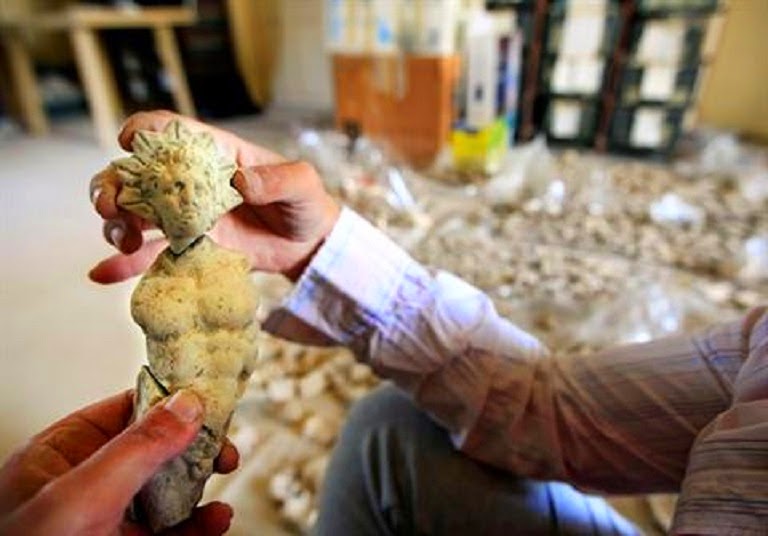Poco altro di paragonalbile è mai stato scoperto in Libano dal 1960, nelle zone di Sidone, Tiro e Umm al Ahmed e quel poco si trova già al museo di Beirut.
La statua rappresenta un uomo che indossa una specie di kilt pieghettato (noto come 'Shenti'), recante un drappeggio pendente dalla vita fino al bordo inferiore dell'abito. La mano destra è chiusa a pugno e probabilmente regge un oggetto ignoto, forse un rotolo scritto, oppure stoffa.
La statua è stata rinvenuta riversa sulla faccia, dato che era stata riusata dai romani nel materiale basale di sostegno di un pavimento marmoreo.
Sono anche state ritrovate tre nuove stanze in un edificio pubblico del III millennio a.C. insieme ad un deposito di 200 chilogrammi di grano 'einkorn' combusto, 160 kg di fagioli e 20 sepolture di adulti e di bambini del II millennio.
Phoenician and Roman antiquities found in Sidon
A statue of a Phoenician priest has been uncovered at an excavation site in the southern city of Sidon, along with other antiquities, the most unique find for Lebanon in decades, the British Museum team announced Monday.
An archaeologist shows a Roman-era statuette of Apollo Helios found at the Freres College excavation site in the southern city of Sidon [Credit: Mahmoud Zayat/AFP/Getty Images]
The priest, 115 centimeters high and dating back to the sixth century B.C., was found at the Freres College site, which has been under excavation for the last 16 years, the head of the excavation, Claude Doumit Serhal, announced at a press conference at the Lebanese Directorate General of Antiquities. Archaeologists hold up the incomplete statue of a Phoenician priest dating back to the sixth century B.C.
The statue was displayed at the Freres College site in the southern Lebanese city of Sidon on Monday
[Credit: Mahmoud Zayat/AFP/Getty Images]
“Nothing comparable has been found in Lebanon since the early 1960s, and only three other examples originating from Sidon, Umm al-Ahmed and Tyre are housed in the Beirut National Museum,” the statement said.
The figurine is that of a male wearing a pleated kilt, known as “shenti,” with a pendant flap from the waist to the kilt’s hem. The left hand is in a closed fist and holding an unknown object, “probably a scroll or a handkerchief,” according to the statement.
An archaeologist holds up a bronze symbol representing the Phoenician goddess Tanit during Monday's news conference in Sidon
[Credit: Mahmoud Zayat/AFP/Getty Images]
Archaeologists found the statue lying on its front, as it was re-used by the Romans and placed under a marble pavement in that position.
An archaeologist holds Roman-era figurines of the goddess Isis, found during the excavations at the site of the Old French School, Les Freres, in Sidon
[Credit: Mahmoud Zayat/AFP/Getty Images]
Three new rooms were also found in a third millennium B.C. public building, along with a 200-kilogram deposit of charred wheat called einkorn, 160 kilograms of broad bean and 20 burials belonging to both adults and infants from the second millennium B.C. This year’s excavation has been extended over six months, having started in January, in order to prepare for the building of an on-site museum, the statement added.
Source: The Daily Star [May 20, 2014]
Read more at: http://archaeologynewsnetwork.blogspot.it/2014/05/phoenician-and-roman-antiquities-found.html?utm_source=feedburner&utm_medium=feed&utm_campaign=Feed:+TheArchaeologyNewsNetwork+(The+Archaeology+News+Network)#.U4CDEnJ_uSo
Follow us: @ArchaeoNewsNet on Twitter | groups/thearchaeologynewsnetwork/ on Facebook



